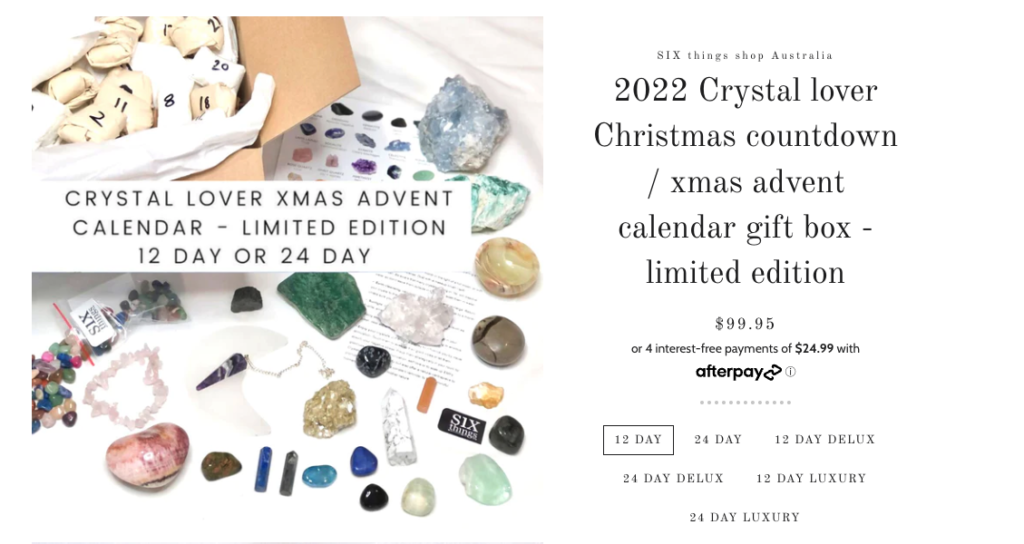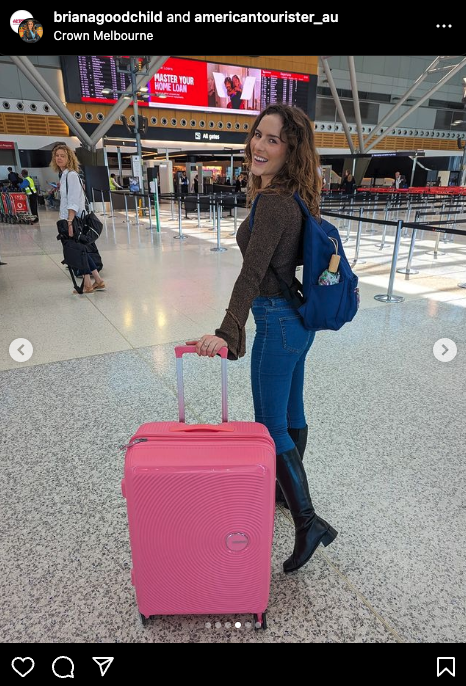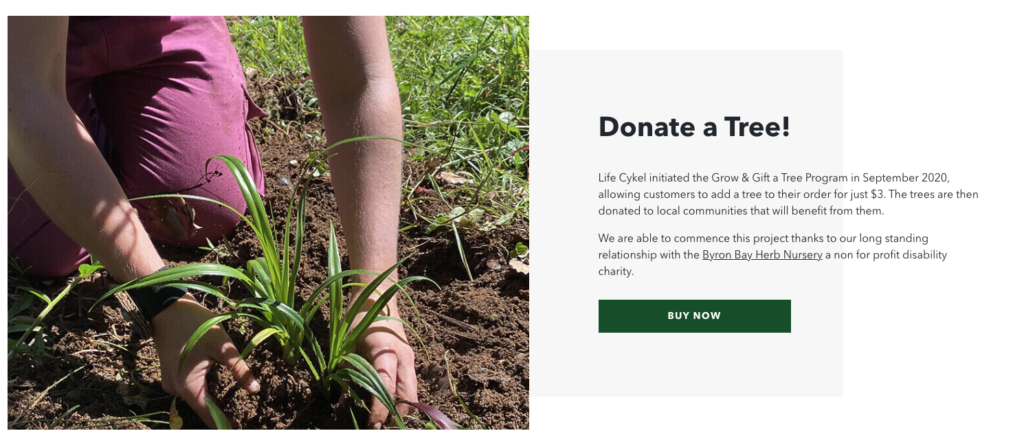
Last-Minute Marketing Tips & Examples to Boost Your Holiday Sales
The 2022 holiday season is officially in full swing: Aside from ClickFrenzy, we’ve already seen Pre-Black Friday promos.
In parts 1-2 of our Ecommerce Holiday Playbook, we offered proven tips on how to optimise your homepage and how to optimise your product pages, cart and checkout flows.
Now that it’s crunch time, part 3 here is all about powerful last-minute marketing tips and examples you can squeeze into your campaigns to boost your holiday sales.
How to Optimise Your Holiday Campaign Offers
We touched on using compelling offers on your homepage in part 1, but here’s an expanded view on how to use these most effectively with your marketing campaigns and channels like email, paid search and social media marketing.
Choosing the best offers for your customers
If you’ve been testing different offers throughout the year/s, you may already be locked in on the big winners for your ideal customer segments.
(And if not, get a jump on that and roll it into your 2023 marketing action plan!)
Just bear in mind that successful marketing often balances what’s worked well before, with experiments around new products, campaigns, customer segments and offers.
Given the impact of the holiday season on ecommerce sales, it’s not unusual for marketers to stick with what worked in previous years.
But if you can, carve out some room in those 2022 campaigns for a fresh offer that might outperform the tried-and-true. Especially if you’ve got data to support it.
Tip: Testing with a small sample audience or segment, or a particular channel campaign, like email, is a lower-risk way to experiment during this critical season.
7 of the best holiday ecommerce offers for 2022
Perhaps the most widespread style of holiday offer, the discounts and deals offered around events like ClickFrenzy, or Black Friday to Cyber Monday (Small Business Saturday is squeezed in there) to Boxing Day, all aim to catch the shopping wave at its peak.
In 2021, more than 500 Australian retailers advertised over 4,000 deals and discounts during Click Frenzy’s Main Event, and on average, saw a 65% increase in website traffic on day 1. However, many ecommerce brands unofficially ride the wave with “Frenzy” sales, where the impact is less clear but still likely to resonate with shoppers in holiday mode.
Also, now that Black Friday has established itself in Australia, the Pre-Black Friday sales promotion emails have begun to appear in the inbox.
Tips: With this being a very popular offer type, consider how you might make yours stand out from an overcrowded field. Discounts are everywhere right now, and you don’t want to overdo it with one-size-fits-all discounts to acquire new customers if you don’t have a high average lifetime value. Combining these with shipping offers also makes a compelling 1-2 punch for the holidays (see # 4, Free express shipping, below).
Examples: Segmented discounts can be an effective workaround to flat-rate options. Instead of 20% off storewide (or similar), options like 10% off first orders (on your website) and a 20% off “welcome back” offer for past customers (email campaign).
Product- or product-line specific discounts can also stand out and protect your margins.
Tiered discounts can also work well: Spend $100, Save $25 (or a %); Spend $200, Save $50 (or a %); Spend $300+, Save $75 (or a %).

2. Holiday special products or services
This type of offer covers a wide range, so you have several options to experiment with on your site and in your marketing campaigns.
For example, you may have new products specific to the holiday season, like Christmas gift hampers or beer advent calendars (yes, another beer example … it’s a tradition).
Perhaps you’ve developed a new product or range and you’re launching it during the holiday shopping peak – or it’s nearly developed, but won’t be ready in time for Christmas, and you want to launch a “sneak preview” or pre-order campaign so as not to miss the holidays.
Services and bundling options also fall into this category, from free gift wrapping and bonus gifting options (e.g., buy one, get one; his-and-hers gift sets), to special installation and/or setup offers (e.g., furniture delivery plus assembly and packing rubbish removal).
Tips: With such a wide range, you can do a fair bit of testing around linking these offers to your products – in fact, the sales results can assist with your product development and refinement for 2023. For instance, you can use the holiday advent calendar model with 2-5 calendars using different price ranges, product types of number of products.
Example: Six Things uses the model described above, with six variations of their product advent calendars (crystals). Options include 12-day and 24-day, with regular, deluxe and luxury calendars (see image).

3. Gift card options, virtual or delivered
These offers are among the best for giving last-minute shoppers a helping hand to purchase gifts for family, friends and colleagues.
Whether it’s the gift givers who don’t know the recipient’s clothing sizes, or aren’t sure what will make the perfect gift – or if it will even arrive in time – gift cards can come to the rescue.
Virtual gift cards, sent via email, make life easier for all those shoppers who need an 11th-hour gift – even if they’re shopping around Dec 23-24 (we won’t judge).
Tips: Test virtual gift card offers as an alternative to discounts, in the last days leading up to Christmas and Boxing Day. Consider testing these in places like website overlays, email campaigns, abandoned cart automated emails, and social media ads.
4. Free express shipping to ensure Christmas delivery (with clear parameters)
If you’re using it with your homepage and website, you’ll definitely want to include this offer language in your campaign creative.
We all know how powerful free shipping is as a shopping motivator. Bumping that up to free express shipping can help reduce shopper anxiety around whether their orders will arrive on time or not – and could be the tipping point for more sales.
Tips: With these offers, make sure the cutoff dates and any other stipulations – e.g., minimum order amounts, specified delivery zones – are crystal clear from shopping to checkout and confirmation. Shoppers don’t want to scan the Terms & Conditions page, or worse, find out the order they thought qualified, didn’t tick all the boxes.
5. Giveaways, contests and competitions
These are some of the quickest and easiest campaign offers to put together, and done well, can generate a lot of brand awareness and shopping activity.
While there are different types of giveaways and competitions of course, with their own specific rules – see this helpful guide to Australian promotion regulations here – “test of skill” based promotions don’t require permits and are likely a better last-minute option.
Social media is the top option for such campaigns, thanks to the ease of tagging and sharing options that get your brand in front of new audiences. Note that with organic social media reach and engagement much lower than a few years ago, paid social ads are essentially a must for widespread visibility. Email also makes for a solid one-two punch with social here.
You can use a variety of entry options, from asking for social likes, follows, tags, reposts and specific content (answer a question, post a photo/video, etc.), but make sure to set the prize value high enough to make the bar to entry feel fairly low. Too many hoops to jump through will dampen the response and the results.
Tips: The more enticing your giveaway is, and the easier it is to participate and win, the more likely it is to take off. This is the holiday season, so go big on the value with products – e.g., a Bestsellers Bundle or a “12 Days of Christmas” style prize-per-day to a dozen winners.
Examples: Need some visual inspiration? Check out 7 campaigns that used the “12 Days” format and 10 Social Media Contest Ideas for the Holidays.
6. Collaborations and co-marketing offers
Granted, this isn’t the first choice for last-minute campaigns, as more lead-time to develop collaborations can boost their success. But don’t write it off just yet.
There are two key factors that could make this type of campaign a big winner for your brand – even this late in the game.
First, the Instagram Collabs feature has made it faster and easier to get your brand and products in front of new audiences. This includes shoppable posts, and the Collabs feature can be used in feeds and Reels – which also makes it an attractive option for giveaways and cause campaigns. See examples and get your FAQs answered here: Everything You Need to Know about Instagram Collabs [+ Leading Tools]
Second, more and more platforms are springing up to make collaboration easier by handling most of the legwork of finding and managing the right partners. This can minimise overhead on your end, and make campaign creation and launches easier and faster, potentially getting them in under the holiday wire. Example companies include Collabosaurus and Social Cat.
Tips: These days, many brands are finding there’s more bang for the buck with so-called microinfluencers or nanoinfluencers than the Instagram top end of town. This approach is especially useful for up-and-coming brands with limited budgets for creative (high-quality photo/video), PR or paid search ads (where competition and bid prices tend to rise in line with the holiday season).

7. Charitable causes and donations
Last but by no means least, if it’s an authentic fit with your brand, adding a charitable or purpose-driven component to your holiday campaigns can be a big winner.
Research shows that shoppers are increasingly looking to shop with and support businesses that incorporate some form of “doing good” – roughly 44% of online shoppers consider themselves “purpose-driven consumers.”
However, according to an Inside Retail survey, “more than half of Australians believe purpose-led organisations are not genuine and that their main focus is to put profit before purpose. That’s also due to consumers’ own experiences, with 44 per cent saying they have experienced factors that have negatively impacted their relationship with brands.”
So holiday campaigns linked to charity or a cause need to be genuine to overcome buyer scepticism. You want these to help, rather than hurt, your brand.
If that’s the case, you might try options like a percentage donation from each sale, a total campaign period donation, contributions such as in-kind gifts or staff volunteering, or even a combination of options.
Tip: This type of campaign works best with a clear connection between the brand and cause or charity. For instance, if you’ve supported certain charities before, you might expand that to include new organisations. Or perhaps you have a new product line that’s also opened up a new avenue for donations.

Where and How to Test Your Holiday Campaign Offers
While it’s essential to incorporate the last-minute holiday campaign offers you choose into your ecommerce homepage (part 1) and products and checkout pages (part 2), there’s a bit more latitude when it comes to your marketing channels.
However, as outlined in the tips and examples above, some marketing channels are a much better fit for creating or updating last-minute campaigns than others.
Let’s break down the pros and cons of the top digital marketing options:
SEO: Increasing organic traffic via SEO is a very different beast than paid search: It can take way more time to get results, isn’t as straightforward or precise with targeting compared to paid search, and given the rising visibility of paid search ads (text, shopping) pushing down organic results even further during holiday shopping season, let’s just say SEO might not be your first choice for testing new offers.
If you’re a local business, local SEO tools like Google Business provide a straightforward, free option for posting offers, albeit without true testing functionality.
Email: On the other hand, if you have a decent email list, you can still use that to test a couple last-minute campaign offers before rolling them out in paid traffic channels like search ads or social ads. (You can also use email opt-in overlays to split test offers to help build the list, and drive initial sales.)
Email marketing gets even better if your list is larger and/or you can use segments for customer types, product purchases, and more, for narrowly targeted campaigns – even running a couple of offer types concurrently, then moving the winner into a wider-audience campaign.
Using special codes helps make tracking and measuring success easier within segments, within email platforms and analytics and ecommerce platforms, compared to some of the “cloudy areas” that tend to be common with how some social media tracking varies from, say, Google Analytics.
Social Media Ads: Organic social media reach has been low for ages now, and while that’s certainly not to say it can’t work for brands with large, engaged audiences, similar to the advantages of paid search vs organic search for last-minute campaigns, the paid social ads traffic gives you the better options to reach the right prospects, and convert them to new customers.
Social media is also the clear choice for collaborations, giveaways and co-marketing campaigns with microinfluencers, with organic and paid options worth considering to achieve the reach, engagement and conversion goals you set for your campaigns. While social ads don’t have the same buyer intent as paid search options, they also tend to cost less than paid search ads, and are a good starting point for smaller brands or ad budgets.
Paid Search Ads: Paid search can be a very effective holiday sales driver, yet it can also be the most expensive if you’re in highly competitive markets, you’re new to paid search, and/or if you’re just launching holiday campaigns and they haven’t yet been optimised. Note that plenty of businesses (small and large) have jumped into paid search at the deep end, and because it’s a big, ever-changing landscape, didn’t get the returns they expected or needed.
If you understand the risks and costs involved, already have paid search campaigns doing well in-market, and have specialist experience and budget available, this can be a top marketing channel for testing new offers and campaigns like those outlined above. (Or you might want to try a paid search marketing agency.)
Tip: Whichever platforms or channels you decide to use with your campaigns, make sure you’ve got your data tracking sorted this holiday season – that includes updating your Google Analytics to GA4, so you’ll have 2022 holiday marketing data available for 2023!
We hope you found plenty of value in this 2022 Ecommerce Holiday Playbook and have put the ideas, tips and examples to good use with your website and marketing.
We wish you the best for this holiday shopping season!